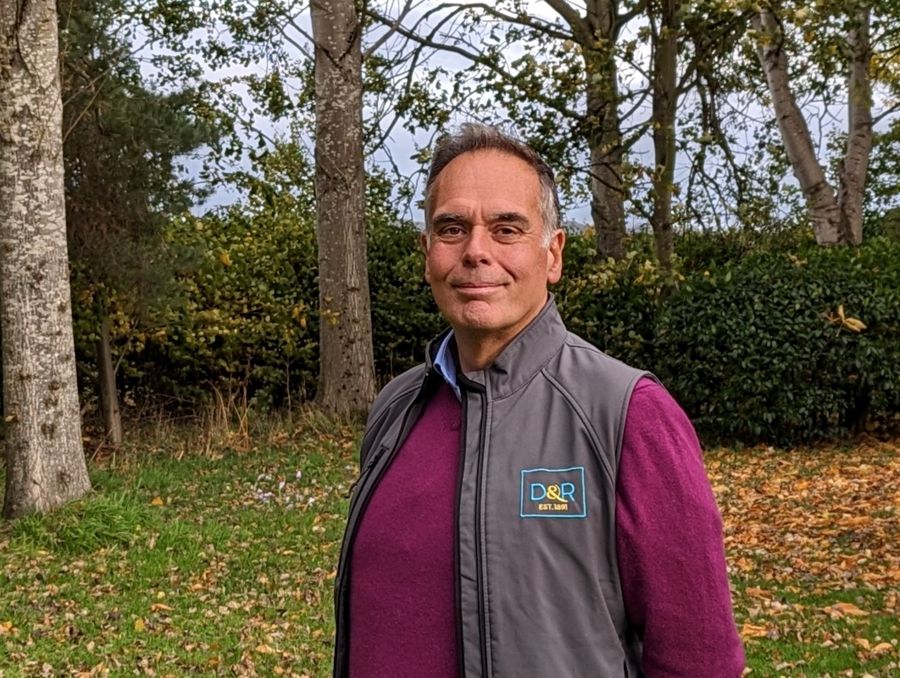The Scottish Farmer front cover article (27th May 2023) highlights forestry’s failure to generate carbon credits. Commenting on the Woodland Carbon Code Model, Keith Muir, Head of Forestry at Davidson & Robertson asks, is it time to challenge the code?
The Woodland Carbon Code (WCC) was originally designed to take out carbon from the atmosphere, locking it up long-term for the benefit of climate change. Unfortunately, it has been amended and is now prohibitive for many looking to plant new woodland. Instead of fitting the global norm, the UK should be looking at how we meet our own carbon offsetting, biodiversity, and timber market needs.
The Woodland Carbon Code (WCC) that most UK landowners use, is managed by Scottish Forestry, and backed by the UK Government. It is a robust well-managed scheme but is now being driven by factors outside the original remit of removing carbon from the atmosphere and is not an option if landowners want to plant woodland for profit.
Initially, planting conifers and broadleaf species was permitted, but the code was amended and now predominantly excludes conifers because the WCC model considers these would be planted and profitable without the benefit of carbon credits. WCC can’t therefore claim they make a direct difference to climate change.
Critically, the prime requirement of ‘additionality’ has also been introduced, meaning new woodland only fit the WCC model if planting would not be financially viable without the benefit of generating carbon credits. There are huge implications for landowners considering diversification, e.g., if tree planting is more profitable than farming the land, it cannot be included.
Davidson & Robertson would also argue that the current code dampens growth of commercial planting. Importantly, landowners still need to produce a crop of some sort and they are constrained while trying their best to tick all the boxes. There is no reason why profitability and sustainable carbon capture can not go hand in hand.
The UK desperately needs home grown conifers, and we are too reliant on imported timber. To most practitioners, it seems the ‘powers that be’ have decided to penalise those that could make a profit out of doing good. This will stifle woodland creation incentives, further reduce the use of home-grown timber, and increase reliance on imports. It will also reduce the opportunities to create improved biodiversity habitats.
It’s also about balance. Conifers capture CO2 at a faster rate in their earlier life than broadleaf trees which catch up in later years, and a mixed woodland has far better biodiversity. Having truly diverse woodlands/ forests can change the landscape when managed with a long-term vision. It should include a crop element, however, the current WCC does not give foresters the option to do that.
“WCC has morphed from using coniferous crops to almost 100% broadleaf crops, and, coupled with ‘additionality’ we will see planting non-productive woodlands that lose the potential to enhance biodiversity, invigorate our timber industry and remove CO2 from an early planting stage.
“In reality, the carbon capture market that is still immature, and with no guarantee of future payout, it is a huge gamble for landowners to plant mainly broad leaf species.”
The fundamental facts are:
- Conifers capture C02 at a faster rate than broadleaves, so we need them now because the issue is now.
- Mixed woodlands are far better for biodiversity, but also need to produce a crop of some sort, allowing landowners to value them accordingly.
- Timber is still in the top 10 of UK imports only around 20% is supplied by homegrown forests.
- The UK remains the second-largest importer of timber in the world. We can change that.
- Livestock flourishes in fields that protect them from bad weather and keeps them cool when it’s hot.
- Soils are protected from erosion when winds are stopped by hedgerows, shelterbelts, and woodlands.
The planet needs more trees and biodiversity, so anything that increases this must be encouraged. There is not sufficient new woodland creation being generated to offset the growing demand of companies and users becoming net zero in their carbon footprint – we need more woodlands to be maturing by 2050.
Thinking needs to be more inventive, and we need to look at incentivising the use of the WCC to do more planting rather than reduce it.
Current opinion is to advise landowners to keep their carbon in case they need to offset their own carbon emissions in the future. This is growing more traction as downline producers are being asked to demonstrate how they intend to become neutral.
If this trend continues there will be even less available carbon to offset leading to one or two outcomes. The price of carbon will explode, or the carbon market will collapse because it is not working.
It is time to look at the WCC and its effect on the UK rather than simply following what other countries do. We can lead from the front, be inventive, bold, and ambitious and allow landowners to make money from carbon, so in turn, they can create more woodland, biodiversity, and carbon capture.
For more information contact Keith Muir on 07379 495517 or email KM@drrural.co.uk



